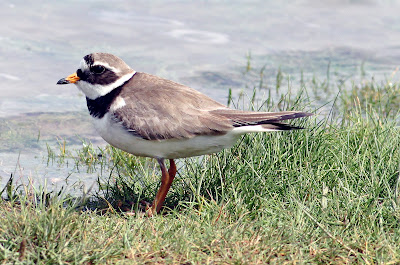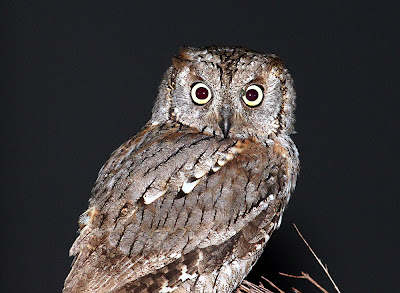I decided to go to Out Rawcliffe for a spot of mist netting this morning so set off early about 6am, still a good two hours after first light. At this late hour I didn’t expect to find 2 Roe Deer just 500 yards from home, crossing the main A588 road at Stalmine and then running off towards the river when they saw the car.
When I got to the farm it was the turn of a Tawny Owl and then a Little Owl to flee at the sight of my car, so no pictures there either. Both owls were in regular spots so they might be more cooperative next time.
The ringing was quiet, as expected in June when lots of birds are still in the throes of breeding, either sat on or laying eggs where they stick close to home action without venturing into ringer’s nets. I caught a few bits and pieces, 2 Blackcap, 2 Whitethroat, 3 Willow Warbler, 2 Blackbird, 1 Robin and 1 Lesser Redpoll.
The Lesser Redpoll proved to be especially interesting when I found it to be a female in breeding condition, with a well-defined and extensive brood patch. Whilst Lesser Redpolls breed extensively some miles inland, generally to the east of the A6 they are not known to nest as close to the Fylde coast as Out Rawcliffe. During the morning I heard other Lesser Redpolls flying over. Now, and following several such sightings last year I suspect the species is re-establishing itself towards coastal Fylde where its range contracted in the 1970s and 1980s to become nowadays just a spring and autumn migrant.
Lesser Redpoll
Two male Blackcaps caught today with no sign of females or youngsters yet.
Blackcap
At one point I stood watching birds flitting through the plantation, oblivious to a sitting female Whitethroat inches from my right leg, the bird flying off only when I had obviously stood near her too long. The nest had three eggs, a normal Whitethroat clutch being 5 eggs.
Whitethroat nest
Whitethroat
Blackbird
Willow Warbler
At first glance a Robin may appear to be an adult, but the loose feathering and remnants of a yellow gape show how it is a youngster, now several weeks old but from an early season nest.
Robin
Robin
Other birds today: 2 Buzzard, 4 Great-spotted Woodpecker, 15 Tree Sparrow, 12 Goldfinch, 3 Curlew, 2 Oystercatcher, 2 Lapwing, 4 Linnet, 2 Skylark, 2 Corn Bunting.























































.jpg)












